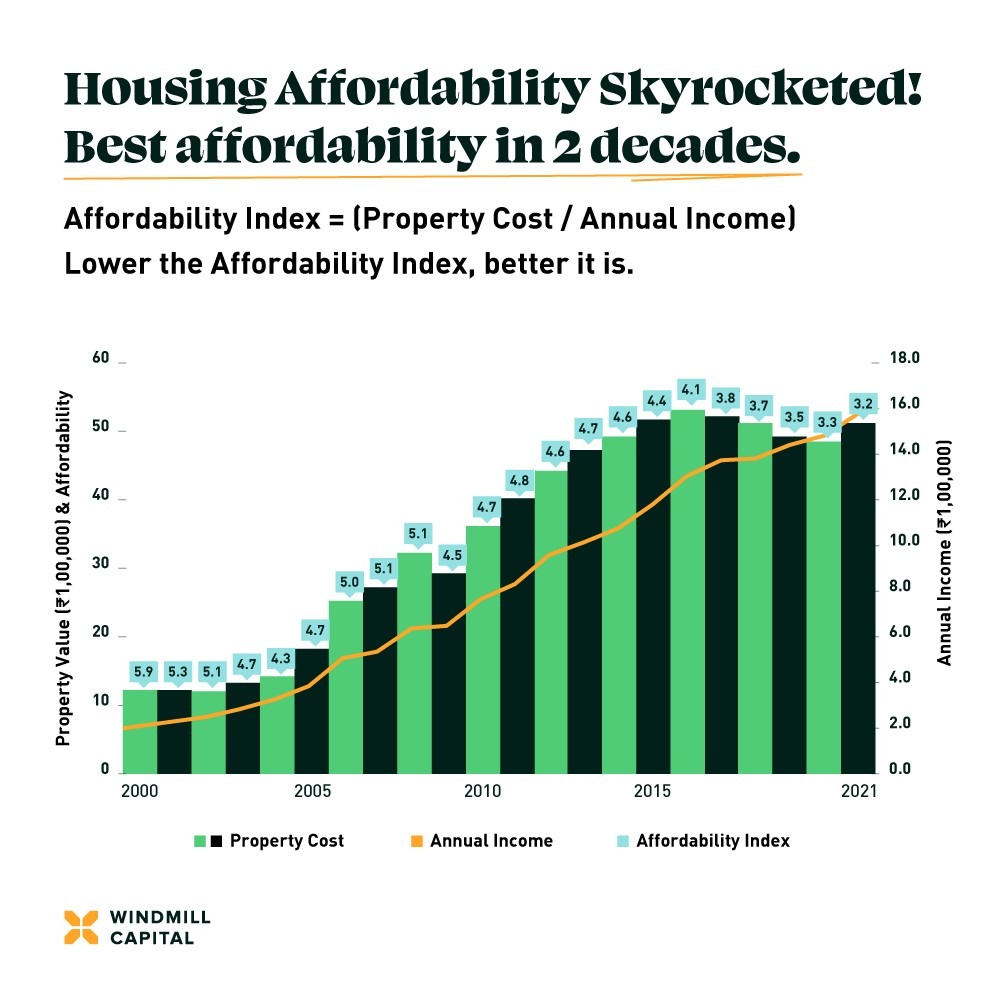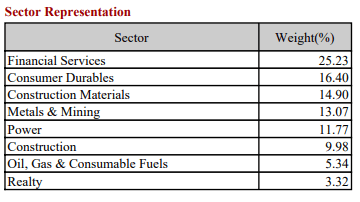Affordable Housing

The COVID-19 pandemic has been the de facto reset button for financial markets all over the world, including India. It has been fascinating to track developments concerning the Indian financial markets and to witness the explicit change in the pandemic phase. One of the key themes over this phase has been the constant change in market leadership with respect to different sectors. Please allow me to explain.
When the crisis hit us, the pharmaceutical sector was undoubtedly the favorite kid of the town as maximum resources got directed towards pharma companies. Then, it was time for the IT players to enjoy the attention and make handsome gains as companies across the world began to work remotely. This was followed by commodity facing stocks (read: steel, sugar, and so on) that benefited due to disruptions in the supply chain.
Indian Housing Sector
While the list goes on, the point that I want to drive home here is the fact that sector market leadership, for brief periods, has become the flavor of our markets. Revolving around the aforementioned theme, this article will talk about one of the upcoming sectors that might be at the start of its beneficial cycle and provide insight into the way you, as an investor, can go about considering investing in the sector.
In congruence with the population of our country, the real estate industry in India is one of the largest in the world. It is needless to say that the housing sector forms a sub-sector in the real estate industry. To put forth some perspective, the real estate industry in India is the second largest employer after agriculture. Market forecasts suggest that the industry is on its course to touch ~$1 tn. in market size by 2030 from the current ~$200 bn. That shall equate to a GDP contribution of nearly 13% as compared to the present 8-9%. Now if you’re wondering this is one of those articles that is heavy with numbers, then no that’s not the case.
In my view, it is imperative to present these lofty industry size numbers with a slightly more nuanced metric to make sense of the entire context. And that metric is affordability. At the end of the day, all that matters is whether an average Indian household is able to afford a house of their choice.

The graph above exhibits the affordability index in India. As mentioned, affordability equals property prices divided by annual income. Therefore, lower the number, better the affordability. In 2021, affordability was the best in as many as 25 years, suggesting that the housing market has bullish trends.
The next logical question is why does the housing market in India have positives? Again, there are a multitude of factors contributing to the positives but let me to chalk out the prominent ones:
- All time low interest rates: home loans are available at the lowest rates and prospective buyers are availing the same to their advantage
- Rapid urbanization: with the internet and digitization becoming the central theme, more folks aspire to live in urban centres. At present, approximately 32% Indians live in cities, that number is expected to go up to 50% by 2030
- Robust government initiatives: government policies with regards to taxes and other overhead expenses (slash in stamp duty, registration fee) have been encouraging, both for developers and buyers
- Average time spent or top-up demand: it is needless to say that the amount of time an individual spends in their house has gone up drastically owing to the pandemic. Now, this has led to folks wanting to refurbish their spaces thereby providing thrust to the overall sector.
Market Narrative & Ancillary Sector
After having spoken about this sector from an economic angle, let us explore the sector from a market angle. NSE indices, India’s largest index maker and provider, recently launched an index – Nifty Housing Index. The index aims to track the performance of a portfolio of stocks that represent the housing theme in India. It is important to bear in mind that usually a thematic index formation is an indication that the particular idea is gaining ground (housing in this case).
Now what is interesting with the entire framework of the housing sector is the multifacetedness it carries. Meaning, the housing sector has a number of ancillary sectors alongside that play a crucial role in its growth prospects.

If you take a look at the sector representation of the Nifty Housing index, you get to witness the diversity it exhibits. It is fairly intuitive to understand this, right? Behind making a house, contributions from all these sectors present in the image are necessary, starting from financial aid and construction materials to household appliances. This clearly acts as a great bandwagon for the economy as a whole, because if the housing space is doing well, the ancillaries are bound to perform well.
Broadly speaking, one could say there have been various nudges from market regulators as well as fund managers to democratize the idea of investing in the housing theme. In July 2021, Securities and Exchange Board of India (SEBI) had lowered the minimum investable amount for Real Estate Investment Trusts (REITs) from ₹50,000 to ₹10,000. This was also an early indication of the sector’s promising future.
smallcase detailing
As far as the smallcase is concerned, the ideology was to have an all-inclusive portfolio of sectors that are indispensable to the housing needs of this country. The smallcase has a healthy mix of varied sectors starting from building products to paints.
The key differentiating aspect about this smallcase is that it exclusively focuses on affordable home units. While one can witness a bunch of tailwinds for the housing sector, the real deal lies in the migration of rural folks to urban centres. That remains the most under-penetrated pocket. To a large extent, the backbone of the smallcase has been the – Pradhan Mantri Awas Yojana (PMAY) which was launched in 2015 with the aim to build 2 crore affordable house units in a span of seven years. Since its launch, the government has been able to garner investments worth nearly ₹8.3 lakh crores. The scheme has sanctioned 1.2 crore houses and has completed 61 lakh units. While still there is a long way to go, every little step counts.
All in all, our ethos is that the housing wave in India is still in its early years and there remains a plethora of opportunities both from public and private stakeholders to contribute and improve the standard of living for Indians.
Follow us on Twitter @windmillcapHQ for updates on our latest and existing offerings and interesting market insights. Also, feel free to let us know what else you wish to read!
Disclaimer: The content in these posts/articles is for informational and educational purposes only and should not be construed as professional financial advice and nor to be construed as an offer to buy/sell or the solicitation of an offer to buy/sell any security or financial products. Users must make their own investment decisions based on their specific investment objective and financial position and use such independent advisors as they believe necessary. Refer to our disclosures page, here.





